Today’s Current Affairs: 9th November 2024 for UPSC IAS exams, State PSC exams, SSC CGL, State SSC, RRB, Railways, Banking Exam & IBPS, etc
Table of Contents
Airships : Scope

A few companies have attempted to control the buoyancy of airships — a longstanding challenge that has prevented their use for cargo transportation.
- Airships are lighter-than-air, vertical-lift vehicles that achieve flight by using buoyant gasses that are less dense than surrounding air.
- There are three main types of airships: non-rigid (or blimps), semi-rigid and rigid.
- Typically, these bullet-shaped craft are filled with helium or hydrogen, and composed of three main parts: a balloon-like hull, a gondola and a propulsion system.
- Airships were the first aircraft capable of controlled powered flight and were thought to be the future of travel for some years in the early 20th century.
- Airships are lighter-than-air aircraft that are lifted by gas with a density lower than atmospheric gases. This principle also operates in helium balloons.
- Early airships used hydrogen as the lifting gas since it was cheap, easy to produce, and the lightest existing gas. But hydrogen was also extremely flammable.
- Most modern airships use helium, which is non-combustible.
- They see limited use today as advertising platforms, for aerial observation by scientists and militaries, and in the tourism industry.
- Airships are significantly less polluting than aeroplanes as they do not burn fossil fuels to achieve lift.
- They can also reach more places than ships or trucks.
Bran : Recent Study

A recent study highlights that keeping bran on millet improves the health benefits and should be promoted in Indian diets to improve diet quality.
- Bran is the edible broken seed coat, or protective outer layer, of wheat, rye, or other cereal grains, separated from the kernel.
- In flour processing, the coarse chaff, or bran, is removed from the ground kernels by sifting or bolting in a rotating, meshed, cylindrical frame.
- It provides dietary fiber and many different bioactive substances, including phenolic compounds, which can exert a beneficial effect on human health.
- Removing the bran from millets results in decreasing the protein, dietary fibre, fat, mineral and phytate content in them while increasing the carbohydrates and amylose content.
- Dehusked millets are nutritious and should be promoted in Indian diets to improve diet quality, debranned millets are nutritionally inferior and can increase the glycemic load of Indian diets.
Allulose : Sweetener

South Korea has become a top testing ground for the sweetener allulose.
- Allulose is also known as D-allulose and d-psicose and is naturally present in only certain foods like wheat, raisins, figs and molasses.
- It is also commercially produced from beet sugar or corn using specific enzymes.
- It’s also available as a sugar substitute and can be used in recipes for people who want to cut back (or cut out) sugar, including people with diabetes.
- Manufacturers and researchers say it is 70% as sweet as sugar and almost calorie-free.
- High doses may cause side effects like nausea, diarrhea, and other gastrointestinal symptoms.
- It is approved by the U.S. Food and Drug Administration (FDA), which considers it “generally recognized as safe” (GRAS). It’s also approved in some other countries, including Japan, Mexico, Singapore and South Korea.
Millimeter Wave : For 5G rural connectivity
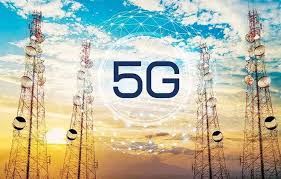
The Centre for Development of Telematics (C-DOT) and the Indian Institute of Technology-Roorkee (IIT-Roorkee) have signed an agreement under the Telecom Technology Development Fund (TTDF) scheme of the DoT with the development of a “millimeter wave transceiver for 5G rural connectivity”.
- Millimeter Wave refers to electromagnetic waves with frequency between 30-300 GHz and wavelength between 10 mm and 1 mm.
- Its frequency spectrum is used for wireless high-speed communications. It is also known as the extremely high frequency, or EHF, band by the International Telecommunication Union.
- It enables higher data rates compared with lower frequencies when used in telecommunications, such as those used for Wi-Fi and current cellular networks.
- The higher frequency range has a high tolerance for bandwidth.
- It offers less latency due to its higher speeds and bandwidth.
- There is less interference, as mm waves don’t propagate and interfere with other neighboring cellular systems.
India And CARICOM : Second Joint Commission Meeting
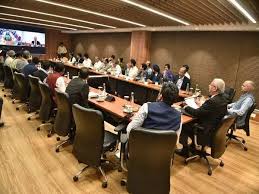
India and CARICOM held their second Joint Commission meeting, an important event that reviewed and charted the future of their multifaceted relationship.
- CARICOM, which stands for Caribbean Community, is the oldest surviving integration movement in the developing world.
- It is an organization of Caribbean countries and dependencies originally established as the Caribbean Community and Commons Market in 1973 by the Treaty of Chaguaramas.
- Main Purposes is to Promote economic integration and cooperation among its members;To ensure that the benefits of integration are equitably shared; To coordinate foreign policy;
- It has 15 members; Antigua and Barbuda, The Bahamas, Barbados, Belize, Dominica, Grenada, Guyana, Haiti, Jamaica, Montserrat, Saint Kitts and Nevis, Saint Lucia, Saint Vincent and the Grenadines, Suriname, and Trinidad and Tobago.
Anguilla, Bermuda, the British Virgin Islands, the Cayman Islands, and the Turks and Caicos Islands have associate member status, and Aruba, Colombia, the Dominican Republic, Mexico, Puerto Rico, and Venezuela maintain observer status.\ - The Chairmanship of the Community is rotated every six months among the member countries’ Heads.
- The CARICOM Secretariat in Georgetown, Guyana, is the principal administrative organ of the Community and is headed by a Secretary General who is the Chief Executive Officer of the Community.
- In 2007, CARICOM officially inaugurated the Caribbean Court of Justice(CCJ), which serves as the final court of appeal for CARICOM members and also handles regional trade disputes.
Black-Footed Ferret : New Offspring Produced
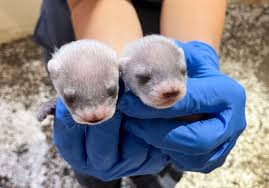
Antonia, a cloned black-footed ferret at the Smithsonian’s National Zoo and Conservation Biology Institute, has produced two healthy offspring that will help build genetic diversity in their recovering population
- Black-Footed Ferret belongs to the weasel family and is the only ferret that is native to North America.
- These are considered alert, agile, and curious mammals, and are known to exhibit keen senses of smell, sight, and hearing.
- It ranges throughout the interior regions of North America, from southern Canada to northern Mexico.
- It can be found in the short or middle grass prairies and rolling hills of North America.
- They live within the abandoned burrows of prairie dogs and use these complex underground tunnels for shelter and hunting.
- It is nocturnal and is active mostly during the night, with peak hours around dusk.
- Ferrets reduce their activity levels in the winter, sometimes remaining underground for up to a week.
- These are carnivores; they mostly eat prairie dogs, also sometimes mice, ground squirrels, or other small animals.
- They exhibit a phenomenon known as “delayed implantation,” in which the fertilized egg does not start developing until conditions are appropriate for gestation.
- Conservation status IUCN: Endangered
- CITES: Appendix I
- It is believed that the loss of natural habitat and the rise in the incidence of diseases are the biggest reasons behind the decline in their population.
Corporate Social Responsibility : In News

India, the first country to mandate Corporate Social Responsibility (CSR), has seen over ₹1.84 lakh crore invested through CSR from 2014 to 2023. With agriculture employing nearly half of the workforce and contributing 16.73% to GDP, interest in directing CSR funds toward agricultural sustainability is rising.
- CSR involves corporate initiatives focused on societal, environmental, and economic development, enabling companies to positively impact communities.
- Governed by Section 135 and Schedule VII of the Companies Act, 2013, and Companies (CSR Policy) Rules, 2014, which outline eligibility criteria, implementation, and reporting requirements for CSR activities.
- Mandatory for companies meeting any of the following:
- Net worth of ₹500 crore or more,
- Annual turnover of ₹1,000 crore or more,
- Net profit of ₹5 crore or more.
- Such companies are required to allocate 2% of their average net profits from the past three years toward CSR.
- If a company fails to meet CSR obligations, it faces fines ranging from ₹50,000 to ₹25 lakh. Responsible officers may face imprisonment (up to three years), fines between ₹50,000-₹5 lakh, or both.
- Prior to 2019, unspent CSR funds could be carried forward to the next fiscal.
- Post-amendment, unspent funds must be transferred to a specified Schedule VII fund by the end of the fiscal year and utilized within three years, failing which, they must be deposited in a government-specified fund
Urad And Tur Imports : Increased
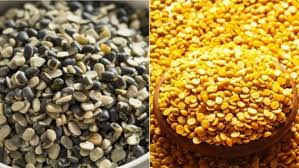
The Indian government reported a significant increase in Urad imports from Brazil, reaching over 22,000 metric tonnes.
- The Ministry of Consumer Affairs highlighted Brazil’s potential as a major supplier of Urad and Tur for India, benefiting from different cropping seasons that align with India’s crop demands.
- Urad:
- Scientific name: Vigna mungo, commonly known as black gram.
- Essential in Indian cuisine, often used as a dal and paired with rice or curry.
- Grown in both Kharif and Rabi seasons in India.
- Also grown in tropical regions like the Caribbean, Fiji, Myanmar, and Africa, introduced by Indian immigrants.
- Tur:
- Scientific name: Cajanus cajan, known as toor dal or pigeon pea.
- Indigenous to the Eastern Hemisphere; cultivated widely in tropical and semi-tropical regions.
- Commonly consumed as a staple in South Asia, Southeast Asia, and Africa.
- Cultivated in Latin America and the Caribbean, widely used in regional dishes.
Adoption Awareness Month : CARA
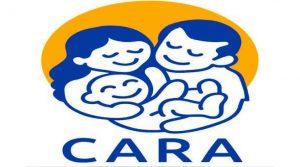
Central Adoption Resource Authority (CARA) celebrated November as National Adoption Awareness Month to promote legal adoptions.
- CARA is a statutory body established under the Juvenile Justice Act, 2015 and functions under the Ministry of Women & Child Development.
- It is the nodal body for adoption of Indian children and is mandated to monitor and regulate in-country and inter-country adoptions.
- Inter-country adoptions in India adhere to the Hague Convention on Intercountry Adoption, 1993, ratified by Government of India in 2003.
- Theme: Rehabilitation of Older Children through Foster Care and Foster Adoption.
- Hague Convention is an international treaty to ensure the prompt return of the child who has been “abducted” from the country of their “habitual residence”.
Processing-In-Memory (PIM) Technology : Data Processing Directly In Memory

Israeli researchers have created software that allows data processing directly in memory, bypassing the CPU.
- This advancement, developed at the Israel Institute of Technology, aims to address the energy-intensive and time-consuming data transfers between memory and CPU, which are bottlenecks in modern computing.
- By reducing the CPU’s workload, this in-memory approach promises substantial time and energy savings.
- Python Programming Language with Digital Processing-In-Memory (PIM) Technology Combines Python with processing-in-memory (PIM) technology, enabling computations to take place directly in memory, bypassing the CPU.
- It Tackles the “memory wall” problem, where data transfer rates fall behind advancements in processor speeds and memory capacity.
- PyPIM platform introduces new instructions for in-memory operations.
- It Allows developers to use Python to create software for PIM systems.
- Includes a simulation tool to estimate performance gains from in-memory processing.
- It Reduces data transfer bottlenecks.
- It Accelerates processing for mathematical and algorithmic tasks.
- It Saves energy, making it efficient for high-performance computing needs.
Protected Planet Report 2024:

The Protected Planet Report 2024, produced by the UNEP– World Conservation Monitoring Centre (UNEP-WCMC) and the IUCN and its World Commission on Protected Areas (WCPA), is the first comprehensive evaluation of the global status of protected and conserved areas.
- It highlights both the progress made and the challenges ahead in achieving Target 3 of the Kunming-Montreal Global Biodiversity Framework(KM-GBF).
Highlights of the Protected Planet Report 2024:
- Global Coverage Progress: 17.6% of land and inland waters, and 8.4% of oceans and coastal areas are under protection.
- While progress has been made, the increase is minimal (less than 0.5% in both realms) since 2020.
- To meet the 30% target by 2030, additional protection is needed: 12.4% more land needs to be protected and 21.6% more ocean needs to be safeguarded.
- Progress in Ocean Conservation: Strongest progress since 2020 has been in the ocean, but most of this has been in national waters.
- In areas beyond national jurisdiction, coverage remains very low (<11% of the total area covered by marine and coastal protected areas).
- Less than 5% of land and 1.3% of marine areas have been assessed for management effectiveness. Only 8.5% of protected land is well-connected.
- Governance remains a challenge, with only 0.2% of land and 0.01% of marine areas assessed for equitable management.
- Only one-fifth of areas identified as important for biodiversity are fully protected. Biodiversity is unevenly conserved.
- Though over two thirds of Key Biodiversity Areas (KBAs) are partially or fully covered by protected and conserved areas, the remaining one third (32%) of KBAs fall entirely outside these areas and lack formal protection.
- Indigenous communities govern less than 4% of protected areas, despite holding 13.6% of global terrestrial areas outside formal protection.
- Governance data is lacking for these territories, and their contributions are often not fully recognized.
Gujarat Semiconductor Policy 2022-2027:

Aligning with the vision for a developed India by 2047, the Gujarat government has introduced the Gujarat Semiconductor Policy 2022-2027 to position Gujarat as a leader in semiconductor manufacturing.
- The Gujarat government has introduced India’s first ‘Gujarat Semiconductor Policy 2022-2027.
- In Dholera’s emerging ‘Semicon City,’ Tata Electronics Private Limited (TEPL) and Taiwan’s Powerchip Semiconductor Manufacturing Corporation (PSMC) are establishing India’s first AI-enabled semiconductor fabrication facility with an investment exceeding Rs 91,000 crore.
- Dholera, is being developed as India’s first Greenfield Smart City.
India Semiconductor Mission (ISM):
- Launch: Initiated in 2021 under the Ministry of Electronics and IT (MeitY) with a budget of Rs. 76,000 crores.
- Objective: Develop a robust semiconductor and display manufacturing ecosystem in India.
- Financial support: Provides incentives for companies investing in semiconductor and display manufacturing, and design capabilities.
- Focus on IP and Technology Transfer: Encourages the creation of indigenous Intellectual Property (IP) and supports the Transfer of Technologies (ToT).
Shanan Hydropower Project:
The Himachal Pradesh government has intensified efforts to reclaim the 110 MW British-era Shanan Hydropower Project from Punjab, asserting its rightful ownership over the projectShanan Hydropower Project Commissioned in 1932, it is India’s first megawatt-capacity hydroelectric project located in Joginder Nagar in Mandi district, Himachal Pradesh.
Namibia Offshore Oil:
Namibia, viewed as one of the last frontiers of untapped oil potential, has recently faced challenges in its journey to becoming a prolific oil producer. Despite significant offshore discoveries in recent years, an unexpectedly high gas-to-oil ratio in these fields has created complications for oil development.
Limit on Private Property Acquisition:
the Supreme Court in the Property Owners Association v State of Maharashtra Case 2024, set limits on the government’s power to take over privately owned resources for public distribution.The petitioners argued that private properties cannot be taken over by the state under the garb of constitutional schemes of Articles 39(b) and 31C of the Constitution.
India Becomes Second Largest Smartphone Market by Unit Volume in Q3 2024:
India’s smartphone market has become the second largest globally by unit volume and third by value in Q3 2024, according to Counterpoint Research. In this period, India accounted for 15.5% of global smartphone shipments, trailing China’s 22% but surpassing the US, which held a 12% share. By value, India’s market share slightly rose to 12.3%, from 12.1% a year earlier.
Bengaluru Unveils First Digital Population Clock at ISEC:
Bengaluru marked a milestone with the inauguration of its first digital population clock at the Institute for Social and Economic Change (ISEC). This innovative installation will display real-time population estimates for both Karnataka and the entire country, providing citizens, researchers, and policymakers with up-to-date demographic data.
Mohammad Nabi to Retire from ODI Cricket After ICC Champions Trophy 2025:
Afghanistan’s iconic all-rounder, Mohammad Nabi, will bring his illustrious ODI career to a close following the 2025 ICC Champions Trophy in Pakistan. The Afghanistan Cricket Board (ACB) confirmed this, marking the end of an era for one of Afghanistan’s most influential cricketers. Although Nabi will step away from ODIs, he intends to remain active in T20 internationals, continuing to lend his experience and leadership to Afghanistan’s short-format ambitions.
World Science Day for Peace and Development 2024:
World Science Day for Peace and Development, celebrated annually on November 10, serves as a significant reminder of the vital role that science plays in society and its contribution to global peace and sustainable development. Organized by UNESCO since 2001, this day emphasizes the importance of connecting science with society and ensuring that scientific knowledge is shared widely, making it relevant and accessible to everyone.




